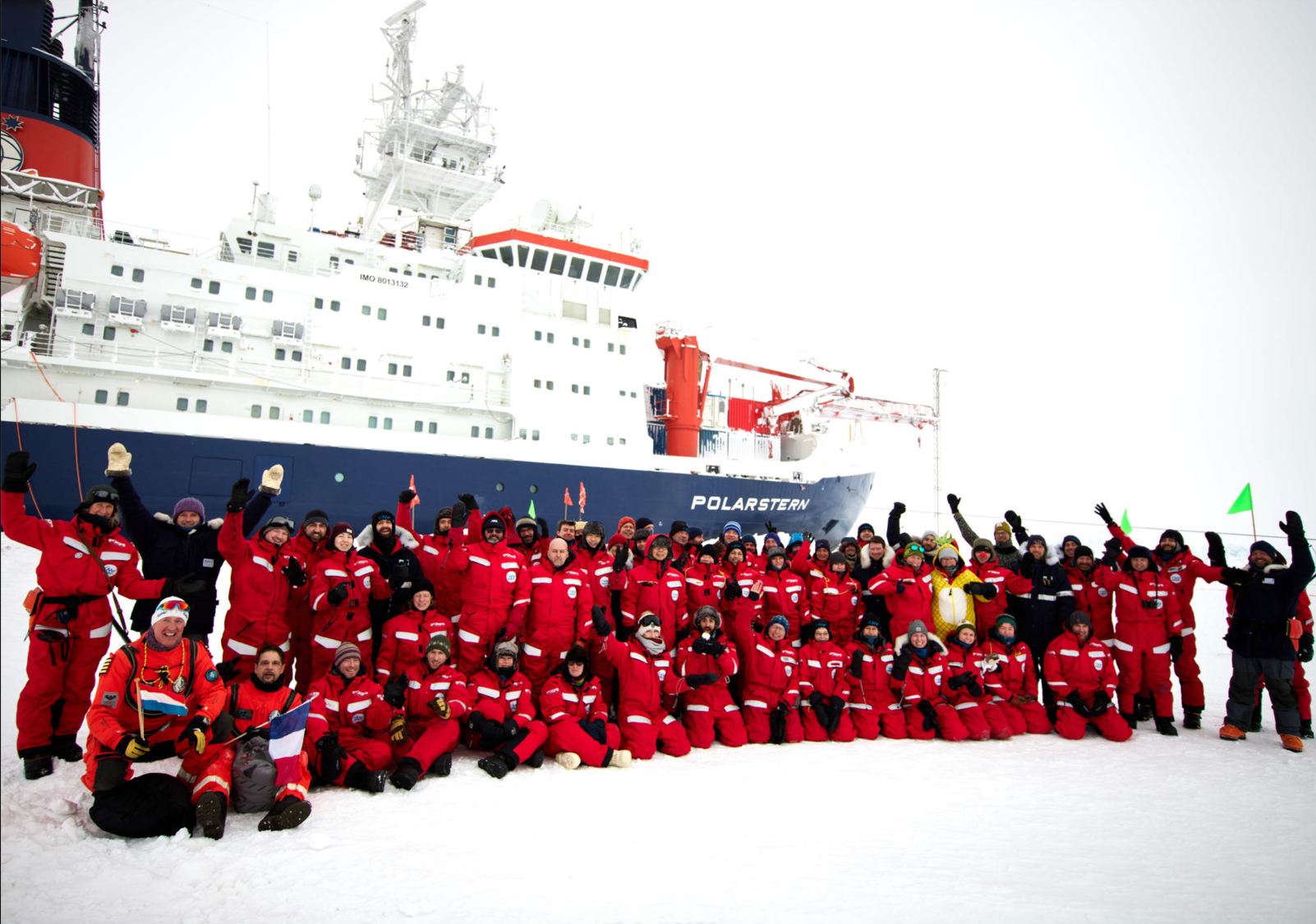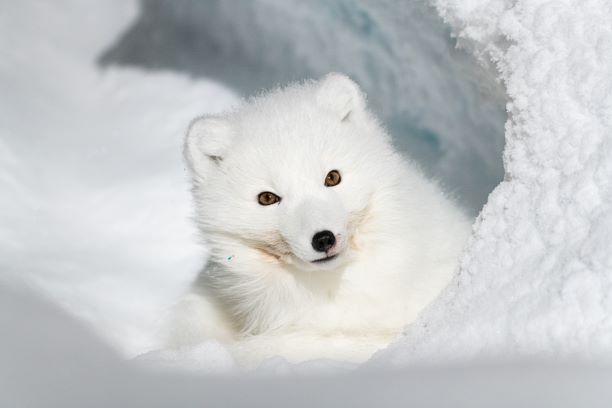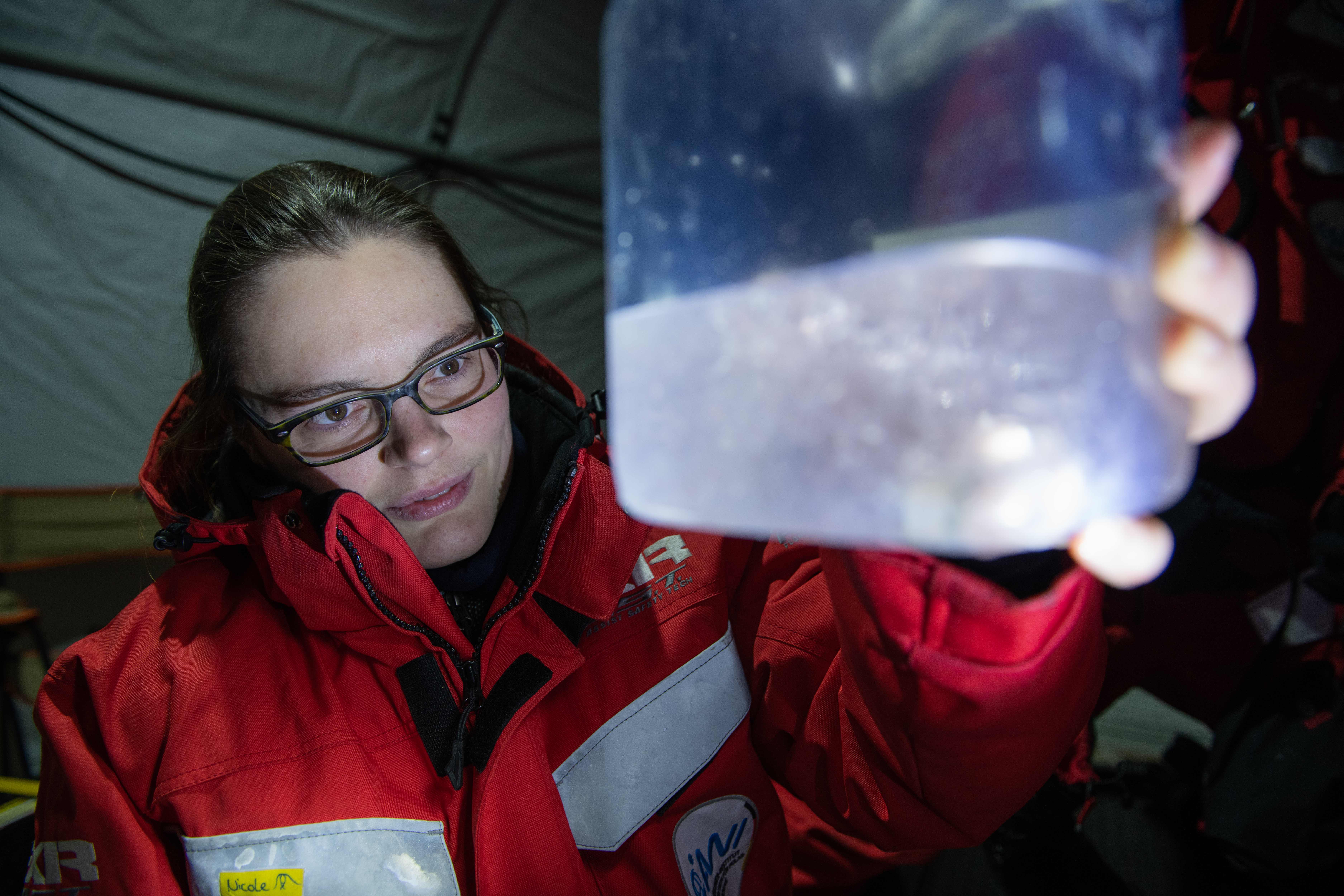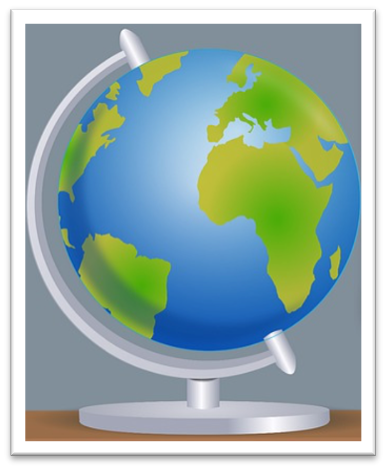MOSAiC Office Hours
Are you interested in MOSAiC-related educational resources but don’t know how to get started? Join MOSAiC curriculum developer Jon Griffith for “MOSAiC office hours”. Jon will be available via Zoom Mondays and Wednesdays from 12 pm – 1 pm MT to discuss implementation strategies, answer questions, and point you to the latest MOSAiC curriculum, virtual field trips, real-time datasets, videos, and other Arctic resources. Please note that this is an informal event and that you are encouraged to come and go as you wish!
Zoom Room link: https://cuboulder.zoom.us/j/4013925454
Monthly Expedition Update

The sea ice around the Polarstern isn't the only thing that is shifting and changing during MOSAiC. As the world has adapted to a global pandemic crisis, so has the expedition. The expedition is currently in Leg 3, meaning there have been two personnel changes so far. Leg 3 participants were originally supposed to swap out with Leg 4 participants in April via aircraft, but the timing and mode of transport for the exchange have been modified out of an abundance of caution.
The current plan is for the next personnel exchange to happen in June via icebreaker instead of aircraft. The next round of personnel will spend two weeks in quarantine before making their way to the Polarstern to make sure the coronavirus doesn't spread onto the ship. Of course, these plans could change, and MOSAiC leaders and team members are prepared to adjust as needed.
You can imagine how challenging it must be to learn you will be away from your family and friends for several weeks longer than you originally thought - many of us are experiencing something similar as we isolate ourselves at home. Now, you can send words of encouragement to those on board the Polarstern as they continue their work in the remote Arctic! Photo credit: Michael Gutsche
Send words of encouragement to MOSAiC team members on board the Polarstern
Read more about MOSAiC in the news
Get daily updates from the Polarstern with the MOSAiC Web App
Puzzled: Piece Together the Answer
What is a way MOSAiC scientists can measure the thickness of the sea ice around the Polarstern without even touching it?
Solve this jigsaw puzzle to find out!
Photo credit: Anne Gold
 #askmosaic: Role Reversal
#askmosaic: Role Reversal
This week, we're doing something a little different. Usually we ask MOSAiC team members your questions and report back with their answers, but this week we're reversing roles! We asked you: What do you find most interesting/exciting about the MOSAiC expedition? Students from Middleton Middle School didn't disappoint - here is what they had to say:

"I think it would be amazing seeing all the animals and the northern lights." -Brooklyn
"I think it is most exciting to learn all about the landscape and climate of the Arctic, like the atmosphere, the sea ice extent, hours of day, the wildlife, and so on." -Benjamin
"I find your camps and ships interesting since you can do all your experiments while being mobile." -Colin
"What I find most interesting about the expedition is that there are actual people going to the Arctic." -Cristofer
"The fact that you explore one of the world's most amazing and dangerous places on EARTH! This exploration of the arctic will be one for the history books!" -Malachi
"I think it is cool how you guys/girls are staying up there for an entire year." -Corbett

"I love that you're treasure hunters. Not actual treasure hunters, but you search for explanation and knowledge, and that's also a form of treasure. " -Jill
"I find that the most exciting thing is trying to find and look for animals." -Lily
"The most exciting part is the adventure!" -Luke
"I think it is exciting that international governments are finally taking a stand against climate change!" -Marshall
"That there is still so much to learn about the Arctic." -Miley
Photo credits: (top) Michael Ginzburg; (left) Esther Horvath
Let us know what you think, or send us your #askmosaic questions!
 This week's featured remote learning resources
This week's featured remote learning resources
Reach the World + MOSAiC
Want to know how MOSAiC scientists use drones to study the Arctic? Check out the latest journal entry and video chat with Dr. Radiance Calmer and learn more about the important role that unmanned aerial systems (UAS) play in research.
Go to Reach the World's MOSAiC Expedition Page
Weekly Arctic Sea Ice Age Visualization: 1984-2019
Created by NASA's Scientific Visualization Studio, this animation shows the age of sea ice in the Arctic between 1984 and 2019. One important change happening in the Arctic visible in this animation is a decrease in multi-year, or 'perennial', sea ice in the Arctic over time. Why do you think this is happening, and what may be its implications?
Go to Weekly Arctic Sea Ice Age Visualization: 1984-2019
Fiske Planetarium at CU Boulder: Dome to Home
Not necessarily polar-related, but a chance to transport yourself and your kids to a similarly remote and alien place: Want to bring your students or kids to the planetarium, but from the convenience of their home? Join the Fiske Planetarium's Dome to Home video series - FREE weekly planetarium shows with lessons designed to compliment your school's science objectives or simply engage your child. Each week will feature a different topic for 20-30 minutes.
Learn more and check out the Dome to Home video schedule here
Check out our full list of virtual and at-home polar learning resources here!
 MOSAiC Weekly Tracking
MOSAiC Weekly Tracking
Plot the Polarstern
Each week we will provide you with the latitude and longitude coordinates of the Polarstern so that you can track its journey across the Arctic.
Download the map to plot coordinates
Download a larger map of the Arctic for a bigger picture view of the expedition area
Location of the Polarstern
| Date | Latitude | Longitude |
| September 16, 2019 | 69.68 N | 18.99 E |
| September 23, 2019 | 72.31 N | 26.93 E |
| September 30, 2019 | 85.12 N | 138.05 E |
| October 4, 2019** | 85.08 N | 134.43 E |
| October 7, 2019 | 85.10 N | 133.82 E |
| October 14, 2019 | 84.85 N | 135.03 E |
| October 21, 2019 | 84.97 N | 132.73 E |
| October 28, 2019 | 85.47 N | 127.07 E |
| November 4, 2019 | 85.88 N | 121.70 E |
| November 11, 2019 | 85.82 N | 116.00 E |
| November 18, 2019 | 86.05 N | 122.43 E |
| November 25, 2019 | 85.85 N | 121.35 E |
| December 2, 2019 | 85.97 N | 112.95 E |
| December 9, 2019 | 86.25 N | 121.40 E |
| December 16, 2019 | 86.62 N | 118.12 E |
| December 23, 2019 | 86.63 N | 113.20 E |
| December 30, 2019 | 86.58 N | 117.13 E |
| January 6, 2020 | 87.10 N | 115.10 E |
| January 13, 2020 | 87.35 N | 106.63 E |
| January 20, 2020 | 87.42 N | 97.77 E |
| January 27, 2020 | 87.43 N | 95.82 E |
| February 3, 2020 | 87.42 N | 93.65 E |
| February 10, 2020 | 87.78 N | 91.52 E |
| February 17, 2020 | 88.07 N | 78.52 E |
| February 24, 2020 | 88.58 N | 52.87 E |
| March 2, 2020 | 88.17 N | 31.02 E |
| March 9, 2020 | 87.93 N | 24.20 E |
| March 16, 2020 | 86.87 N | 12.70 E |
| March 23, 2020 | 86.20 N | 15.78 E |
| March 30, 2020 | 85.37 N | 13.27 E |
| April 6, 2020 | 84.52 N | 14.38 E |
| April 13, 2020 | 84.28 N | 14.97 E |
| April 20, 2020 | 84.52 N | 14.57 E |
**Day when MOSAiC reached the ice floe that the Polarstern will become frozen in and drift with for the next year.
Log MOSAiC Data
Keep track of Arctic conditions over the course of the expedition:
Download Data Logbook for Sept. 2019 - Dec. 2019
Download Data Logbook for Dec. 2019 - Mar. 2020
Download Data Logbook for Mar. 2020 - June 2020
Having trouble accessing these data logbooks? Email us at mosaic@colorado.edu
| Date | Length of day (hrs) | Air temperature (deg C) at location of Polarstern | Arctic Sea Ice Extent (million km2) |
| September 16, 2019 | 13.25 | High: 10 Low: 4.4 | 3.9 |
| September 23, 2019 | 12.35 | High: 6 Low: -1 | 4.1 |
| September 30, 2019 | 9.1 | -4.7 | 4.4 |
| October 4, 2019** | 6.27 | -13.0 | 4.5 |
| October 7, 2019 | 3.05 | -8.2 | 4.6 |
| October 14, 2019 | 0 | -14.7 | 4.8 |
| October 21, 2019 | 0 | -12.8 | 5.4 |
| October 28, 2019 | 0 | -18.3 | 6.8 |
| November 4, 2019 | 0 | -18.9 | 8.0 |
| November 11, 2019 | 0 | -25.5 | 8.7 |
| November 18, 2019 | 0 | -10.7 | 9.3 |
| November 25, 2019 | 0 | -18.4 | 10.0 |
| December 2, 2019 | 0 | -26.6 | 10.4 |
| December 9, 2019 | 0 | -23.1 | 11.2 |
| December 16, 2019 | 0 | -19.2 | 11.8 |
| December 23, 2019 | 0 | -26.9 | 12.2 |
| December 30, 2019 | 0 | -26.4 | 12.6 |
| January 6, 2020 | 0 | -28.0 | 13.0 |
| January 13, 2020 | 0 | -30.7 | 13.1 |
| January 20, 2020 | 0 | -27.1 | 13.6 |
| January 27, 2020 | 0 | -22.5 | 13.8 |
| February 3, 2020 | 0 | -28.8 | 14.1 |
| February 10, 2020 | 0 | -26.2 | 14.5 |
| February 17, 2020 | 0 | -31.9 | 14.4 |
| February 24, 2020 | 0 | -24.0 | 14.6 |
| March 2, 2020 | 0 | -35.5 | 14.8 |
| March 9, 2020 | 0 | -37.9 | 14.7 |
| March 16, 2020 | 10.5 | -27.5 | 14.7 |
| March 23, 2020 | 16.5 | -28.7 | 14.4 |
| March 30, 2020 | 24 | -28.6 | 14.0 |
| April 6, 2020 | 24 | -18.2 | 13.7 |
| April 13, 2020 | 24 | -25.8 | 13.6 |
| April 20, 2020 | 24 | -10.2 | 13.3 |
*Note: We expect data to fall within the following ranges: Length of day, 0-24 hours; Temperature, -40 to 14 degrees C; Sea ice extent, 3-15 million km2
**Day when MOSAiC reached the ice floe that the Polarstern will become frozen in and drift with for the next year.
Is there something you'd like to see in MOSAiC Monday? Let us know!
Send us your feedback
New to MOSAiC Monday? Check out past editions!
Browse more expedition-related educational resources, videos, and blogs
Email us! mosaic@colorado.edu
